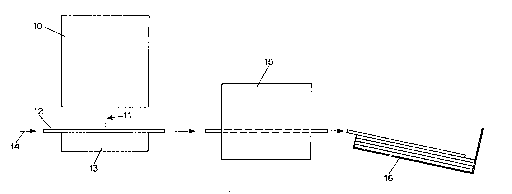Some of the information on this Web page has been provided by external sources. The Government of Canada is not responsible for the accuracy, reliability or currency of the information supplied by external sources. Users wishing to rely upon this information should consult directly with the source of the information. Content provided by external sources is not subject to official languages, privacy and accessibility requirements.
Any discrepancies in the text and image of the Claims and Abstract are due to differing posting times. Text of the Claims and Abstract are posted:
| (12) Patent: | (11) CA 2001474 |
|---|---|
| (54) English Title: | HOT MELT INK PRINTING |
| (54) French Title: | IMPRESSION AU JET D'ENCRE THERMOFUSIBLE |
| Status: | Expired and beyond the Period of Reversal |
| (51) International Patent Classification (IPC): |
|
|---|---|
| (72) Inventors : |
|
| (73) Owners : |
|
| (71) Applicants : |
|
| (74) Agent: | GOWLING WLG (CANADA) LLP |
| (74) Associate agent: | |
| (45) Issued: | 1992-09-01 |
| (22) Filed Date: | 1989-10-25 |
| (41) Open to Public Inspection: | 1990-05-15 |
| Examination requested: | 1989-10-25 |
| Availability of licence: | N/A |
| Dedicated to the Public: | N/A |
| (25) Language of filing: | English |
| Patent Cooperation Treaty (PCT): | No |
|---|
| (30) Application Priority Data: | ||||||
|---|---|---|---|---|---|---|
|
Hot Melt Ink Printing
Abstract
In the particular embodiment of the invention
described in the specification, a hot melt ink print
is prepared by applying the ink to a porous substrate
(12), permitting it to solidify, and reheating the
substrate and the ink to a temperature 5°C to 30°C
above the melting point of the ink for 0.5 to 10 sec-
onds. In one embodiment, the porous substrate (12) is
supported on a platen (13) which is maintained at
least 30°C below the melting point of the ink to pre-
vent drying of the substrate and to inhibit spreading
of the ink into the substrate. The subsequent reheat-
ing of the ink in a controlled manner causes the ink
to penetrate to a desired extent into the substrate
while preventing shrinkage or cockling of the sub-
strate.
Note: Claims are shown in the official language in which they were submitted.
Note: Descriptions are shown in the official language in which they were submitted.

2024-08-01:As part of the Next Generation Patents (NGP) transition, the Canadian Patents Database (CPD) now contains a more detailed Event History, which replicates the Event Log of our new back-office solution.
Please note that "Inactive:" events refers to events no longer in use in our new back-office solution.
For a clearer understanding of the status of the application/patent presented on this page, the site Disclaimer , as well as the definitions for Patent , Event History , Maintenance Fee and Payment History should be consulted.
| Description | Date |
|---|---|
| Time Limit for Reversal Expired | 2008-10-27 |
| Letter Sent | 2007-10-25 |
| Inactive: IPC from MCD | 2006-03-11 |
| Letter Sent | 2006-01-20 |
| Grant by Issuance | 1992-09-01 |
| Application Published (Open to Public Inspection) | 1990-05-15 |
| All Requirements for Examination Determined Compliant | 1989-10-25 |
| Request for Examination Requirements Determined Compliant | 1989-10-25 |
There is no abandonment history.
| Fee Type | Anniversary Year | Due Date | Paid Date |
|---|---|---|---|
| MF (patent, 8th anniv.) - standard | 1997-10-27 | 1997-10-08 | |
| MF (patent, 9th anniv.) - standard | 1998-10-26 | 1998-10-07 | |
| MF (patent, 10th anniv.) - standard | 1999-10-25 | 1999-10-04 | |
| MF (patent, 11th anniv.) - standard | 2000-10-25 | 2000-10-03 | |
| MF (patent, 12th anniv.) - standard | 2001-10-25 | 2001-10-03 | |
| MF (patent, 13th anniv.) - standard | 2002-10-25 | 2002-10-03 | |
| MF (patent, 14th anniv.) - standard | 2003-10-27 | 2003-10-02 | |
| MF (patent, 15th anniv.) - standard | 2004-10-25 | 2004-10-04 | |
| MF (patent, 16th anniv.) - standard | 2005-10-25 | 2005-10-04 | |
| Registration of a document | 2005-12-22 | ||
| MF (patent, 17th anniv.) - standard | 2006-10-25 | 2006-10-02 |
Note: Records showing the ownership history in alphabetical order.
| Current Owners on Record |
|---|
| DIMATIX, INC. |
| Past Owners on Record |
|---|
| LAWRENCE R. YOUNG |
| PAUL A. HOISINGTON |
| ROBERT R. SCHAFFER |